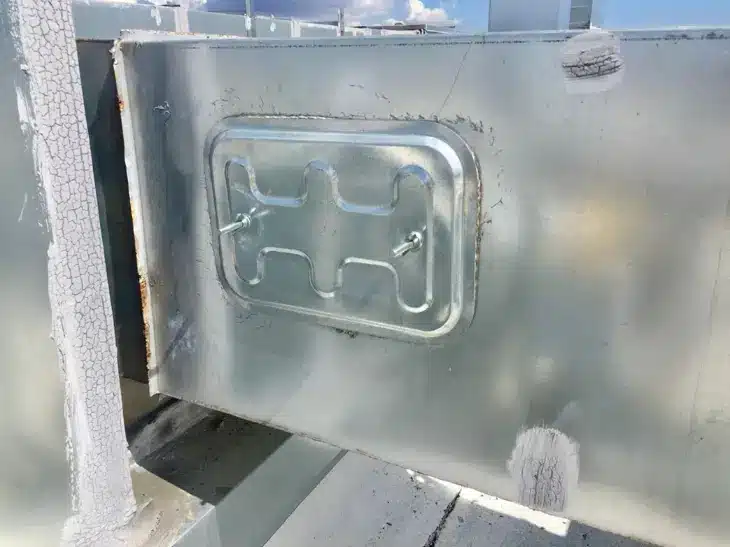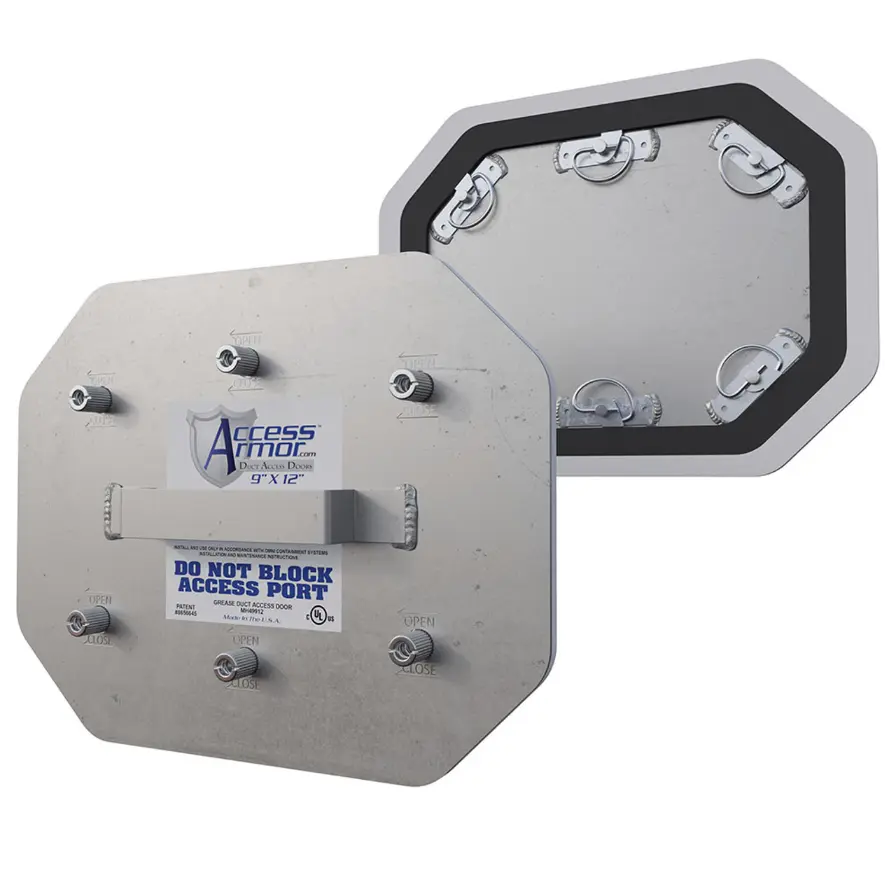Ensuring kitchen cleanliness is vital to any project for professional contractors and architects. A clean kitchen promotes hygiene and extends the lifespan of your construction. This blog will focus on a crucial yet often underrated component—the grease duct access door. We’ll explore how this simple element plays a pivotal role in preserving kitchen cleanliness within the home.
Understanding the Grease Duct Access Door

Before we delve into the significance of grease duct access doors, let’s explain what they are. A grease duct access door is an entry point within the kitchen’s exhaust system, allowing for inspection, maintenance, and cleaning.
Kitchen cleanliness is particularly essential, as it affects the overall safety and functionality of the space. For contractors and architects, including a grease duct access door can significantly contribute to the kitchen’s aesthetics and functionality.
The Role of Grease Duct Access Doors in Ensuring Kitchen Cleanliness
Now that we’ve established the importance of grease duct access doors, let’s explore their specific roles in maintaining kitchen cleanliness.
1. Effective Containment
A well-designed grease duct access door is a barrier to contain grease and residue within the exhaust system. This containment prevents contamination of other areas in the kitchen and ensures that the cleaning process is focused on the ductwork.
2. Routine Inspections
For contractors and architects, routine inspections are essential to identify any potential issues early on. The access door allows professionals to perform thorough inspections and address problems promptly. This proactive approach contributes to the overall safety and cleanliness of the kitchen.
3. Efficient Cleaning
Efficiency is critical when it comes to cleaning grease ducts. The access door simplifies the cleaning process by providing a direct entry point. Cleaning professionals can thoroughly access and clean the ductwork, removing built-up grease and residue. This ensures a clean kitchen and minimizes the risk of fire hazards.
4. Regulatory Compliance
Adhering to safety regulations and codes is paramount in construction and architecture. Grease duct access doors are often a requirement to meet safety standards. By including these doors in your design, you ensure compliance with regulations, promoting safety and cleanliness in the kitchen.
Choosing the Right Grease Duct Access Door

Choosing the right grease duct access door is crucial in any commercial kitchen construction or renovation project. Grease duct access doors are essential for safe and efficient maintenance and inspection of kitchen exhaust systems.
As professional architects and contractors, it is necessary to consider several factors to ensure that the selected access door meets safety, compliance, and functionality standards.
1. Compliance with Codes and Regulations
Familiarize yourself with local building codes related to grease duct access doors. Different jurisdictions may have specific requirements that must follow codes and regulations.
2. Fire Safety and Ratings
Grease duct access doors must meet fire safety standards. Look for doors with appropriate fire ratings, such as UL-listed fire-rated access doors designed explicitly for grease ducts. These doors are crucial for containing fires within the duct and preventing them from spreading throughout the building.
3. Material and Construction
Choose access doors like the BA-AA grease duct access door, which is made from materials that can withstand a grease duct’s harsh and corrosive environment. People prefer stainless steel or other corrosion-resistant materials for their durability.
4. Size and Dimensions
The access door should be appropriately sized so inspection and maintenance personnel can access the hidden components quickly. Ensure it also complies with the duct’s dimensions while providing enough room for workers to maneuver safely.
5. Ease of Access and Operation
Select access doors that are easy to open and close. Look for designs with user-friendly handles, latches, and hinges. Quick and efficient access is essential during inspections and cleanings.
6. Sealing Mechanism
A proper sealing mechanism is necessary to prevent grease leakage and maintain the integrity of the exhaust system. Ensure the access door forms a tight seal when closed.
7. Gasketing and Insulation
Insulated access doors help minimize heat transfer and reduce the risk of external surface temperatures exceeding safe levels. Check for access doors with adequate gaskets and insulation.
8. Cleaning and Maintenance
Consider access doors that are easy to clean and maintain. The design should minimize crevices where grease can accumulate and resist the corrosive effects of cleaning chemicals.
Conclusion
For professional contractors and architects, kitchen cleanliness is more than just a matter of aesthetics; it’s a critical aspect of safety and functionality. The grease duct access door plays a pivotal role in preserving the cleanliness of the kitchen within the home. It simplifies maintenance, enhances efficiency, and extends the lifespan of the kitchen space.
By understanding the importance of grease duct access doors and their specific roles in ensuring kitchen cleanliness, professionals in the construction and architectural fields can make informed decisions to create safer, cleaner, and more functional kitchens for their clients.
